Attention, la cache est accessible à marée basse. Horaires des marées sont ici.
Vous vous engagez de votre propre initiative dans la recherche de cette cache à vos risques et périls. Je décline donc toute responsabilité en cas de problème.
Il s'agit d'une Earthcache, il n'y a pas de récipient à chercher.
Grèze litée au Loc’h
Sur la grève de Quillien on trouve deux sortes d’éboulis périglaciaires quaternaires : head et grèze litée.
A l’ouest du pli disharmonique dans les schistes et quartzites de Plougastel, dans un léger rentrant, la falaise expose une curieuse formation géologique témoin de la dernière glaciation du Quaternaire (-70 000 à -15 000 ans environ) : La Grèze litée.
Les alternances gel-dégel caractérisant cette période ont conduit à la fragmentation des roches (gélifraction) et au glissement de coulées boueuses, charriant ces débris, vers les bas de versant (cryoreptation). La grèze litée correspond à ces éboulis de pente, aujourd’hui consolidés dans une matrice ferrugineuse et organisés en lits inclinés de différentes granulométries.
Grèze litée
La grèze correspond à des falaises de head constituées de petits fragments de roches (entre 2,5 mm et 25 mm maximum). Elle est dite litée lorsqu’elle s’organise en couches (lits) successives de différente granulométrie.
Les lits maigres sont composés d’éléments grossiers et présentent une structure ouverte à semi-ouverte alors que les lits gras sont riches en matrice fine et leur structure est de type colmaté à support matriciel ou clastique.
La principale particularité de la grèze litée au Loc’h est que certains lits comportent de petits blocs gélivés nettement plus grossiers que ceux des grèzes lorraines et charentaises. Ainsi on peut y trouver des éléments qui ont jusqu’à 230 mm.
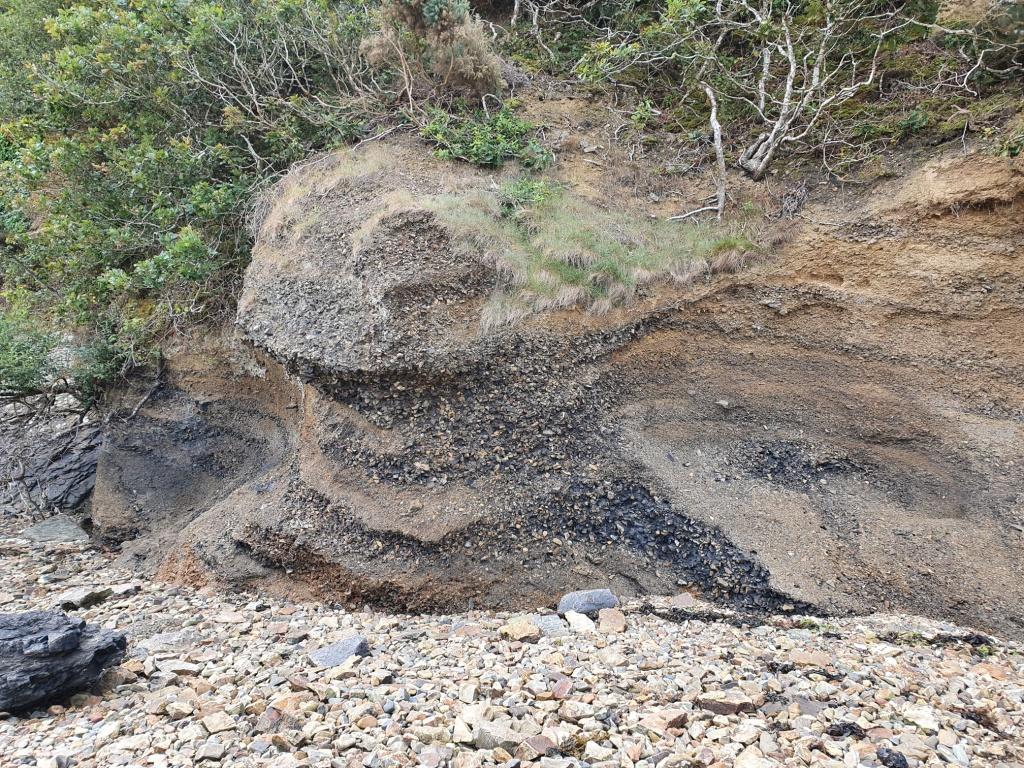
Head (coulée boueuse)
Les dépôts de pente périglaciaires autres que celui-ci dans la côte de Landévennec ont un faciès de head classique (blocs en vrac dans une matrice limono-argileuse).
Le head (coulée boueuse) est un dépôt de solifluxion sur un versant, formé sous climat périglaciaire. Constitué par un matériel sédimentaire grossier (graviers, cailloux, blocs, méga-blocs) emballé dans une matrice plus fine (argile, limon, sable), ce dépôt de pente peut être dominé par les clastes ou par la matrice. Les heads sont caractérisés par un matériel hétérométrique et l'absence de figures de sédimentation.
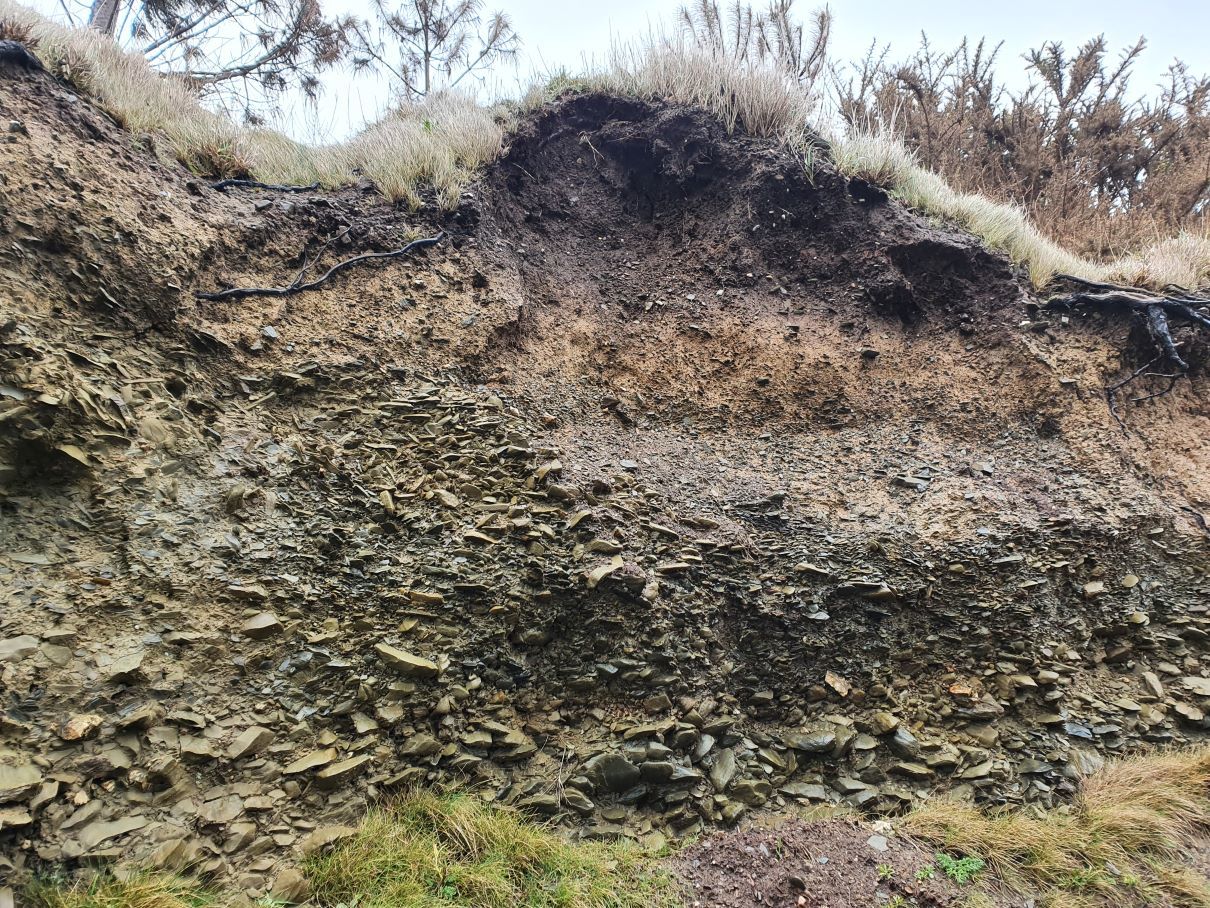
Sources
https://afdpblog.wordpress.com
Wikipedia
https://pmb.bretagnevivante.org
Sites géologiques de la Presqu’île de Crozon
Questions pour valider cette Earthcache :
Aux coordonnées de la Earthcache
- Vous vous trouvez devant un head ou une grèze litée ? Sédiments sont-ils organisés en couches ? Quel est le type de matrice (ferrugineuse ou limono-argileuse) ?
- S’il s’agit de grèze litée essayez de compter le nombre de lits maigres.
Au WayPoint 2
- Vous vous trouvez devant un head ou une grèze litée ? Justifiez votre réponse.
- S’il s’agit de grèze litée essayez de compter le nombre de lits maigres.
- Une photo de vous ou d’un objet vous représentant sur le site. Si vous trouvez des fossiles sur le sillon, il est strictement interdit de les ramasser, par contre n’hésitez pas à les prendre en photo et joindre à votre log.
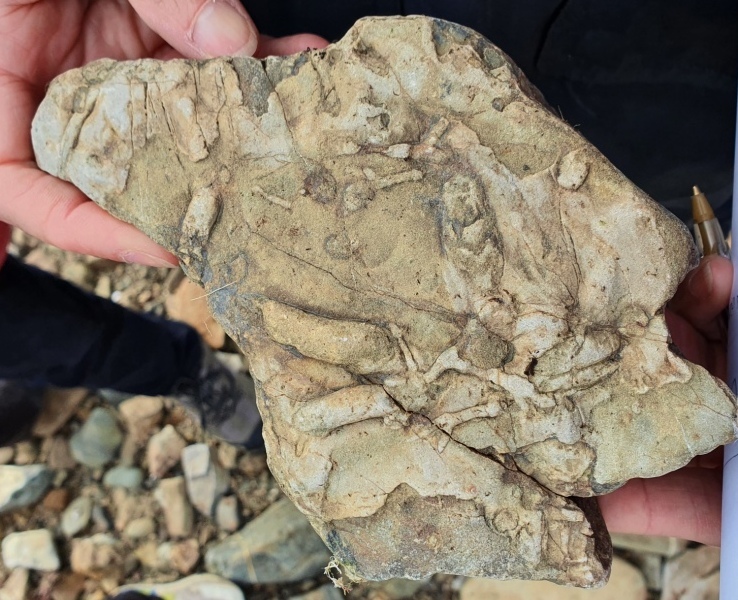
Loguez cette cache "Found it" et envoyez-moi vos propositions de réponses soit via mon profil, soit via la messagerie geocaching.com (Message Center), et je vous contacterai en cas de problème. Les logs enregistrés sans réponses seront supprimés.
English version
Please note that the cache is accessible at low tide. Tide times are here.
You engage in the search for this cache on your own initiative at your own risk. I therefore decline all responsibility in the event of a problem.
This is an Earthcache, there is no container to look for.
Stratified slope deposits at Loc’h
Two kinds of Quaternary periglacial scree are found on the Quillien beach: head and stratified slope deposits.
West of the disharmonic fold in the Plougastel schists and quartzites, in a slight re-entrant, the cliff exhibits a curious geological formation witnessing the last glaciation of the Quaternary (-70,000 to -15,000 years ago): Stratified slope deposits.
The frost-thaw alternations characterizing this period led to the fragmentation of the rocks (frostbite) and the sliding of muddy flows, carrying this debris, towards the bottom of the slope (cryoreptation). Stratified slope deposits corresponds to these sloping screes, today consolidated in a ferruginous matrix and organized in inclined beds of different grain sizes.
Stratified slope deposits
The stratified slope deposits corresponds to head cliffs made up of small fragments of rocks (between 2.5 mm and 25 mm maximum). It is said to be stratified when it is organized into successive layers (beds) of different particle size.
Lean beds are composed of coarse elements and have an open to semi-open structure, while fat beds are rich in fine matrix and their structure is of the sealed type with matrix or clastic support.
The main peculiarity of the stratified slope deposits on Loc’h is that some beds have small frosted blocks which are much coarser than those of the Lorraine and Charentais slope. So you can find elements up to 230 mm.

Head (mud flow)
The periglacial slope deposits other than this one in the Landévennec coast have a classic head facies (loose blocks in a silty-clay matrix).
The head (mud flow) is a solifluxion deposit on a slope, formed in a periglacial climate. Made up of coarse sedimentary material (gravel, pebbles, boulders, mega-blocks) packed in a finer matrix (clay, silt, sand), this slope deposit can be dominated by clasts or by the matrix. The heads are characterized by heterometric material and the absence of sedimentation figures.
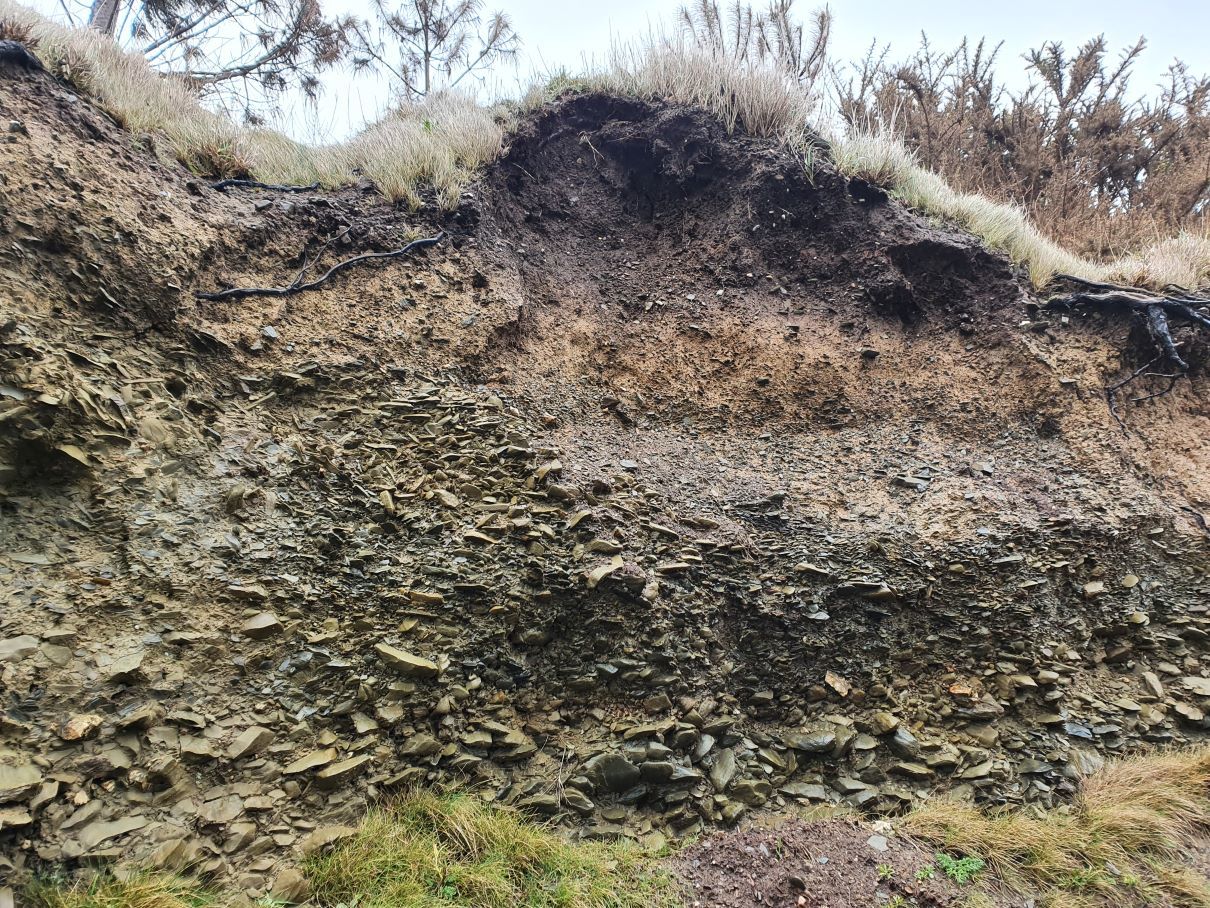
Sources
https://afdpblog.wordpress.com
Wikipedia
https://pmb.bretagnevivante.org
Geological sites of the Crozon Peninsula
Questions to validate this Earthcache:
To the coordinates of the Earthcache
1. Are you in front of a head or a stratified slope deposits? Are sediments organized in layers? What is the type of matrix (ferruginous or silt-clay)?
2. If it is stratified slope deposits try counting the number of lean beds.
At WayPoint 2
3. Do you find yourself in front of a head or a stratified slope deposits? Justify your answer.
4. If it is stratified slope deposits try counting the number of lean beds.
5. A photo of you or an object representing you on the site. If you find fossils in the furrow, it is strictly forbidden to pick them up, but do not hesitate to take a picture of them and attach to your log.
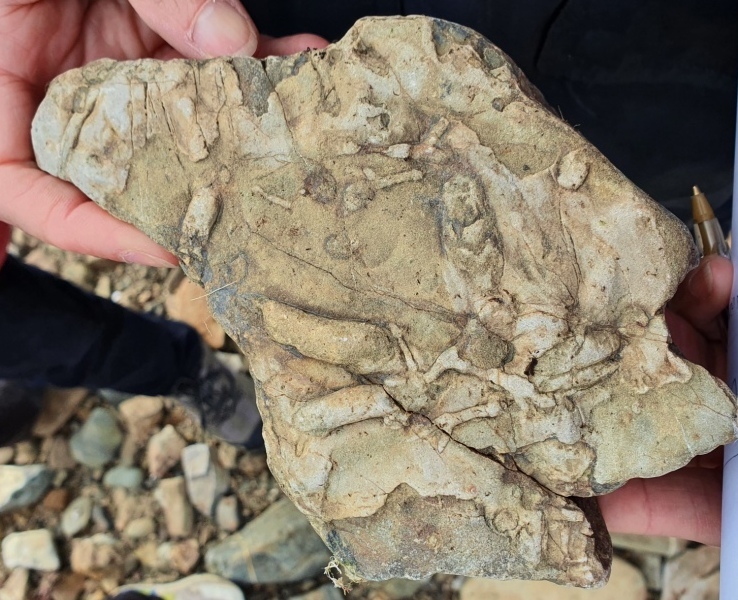
Log this "Found it" cache and send me your suggested answers either via my profile or via geocaching.com (Message Center), and I will contact you in the event of a problem. Logs recorded without response will be deleted.